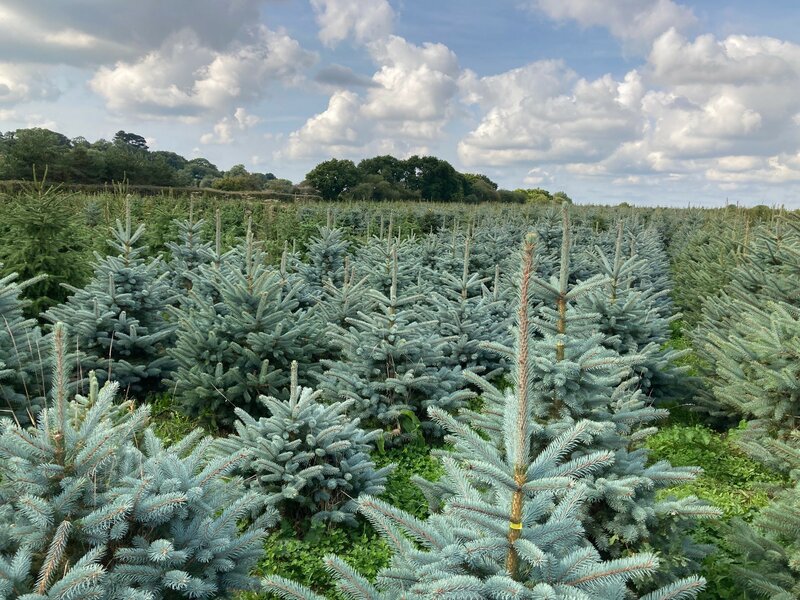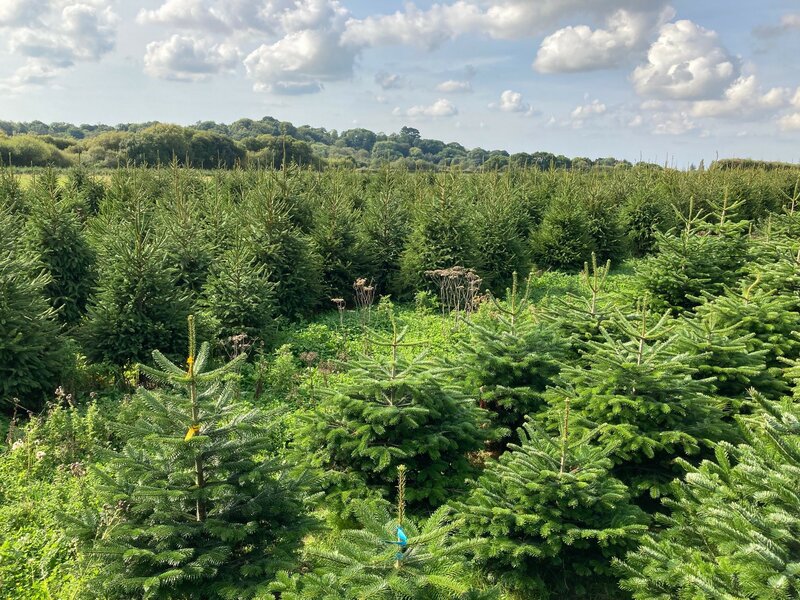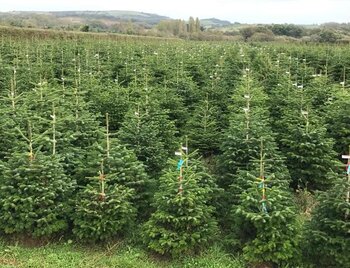There are so many types of Christmas trees out there that it can be hard to know which one is the right choice for you. To help you make an informed decision, we’ll walk you through the pros and cons of some of the most popular options available and explain what makes each type unique. Keep reading to find out more. Which type of Christmas tree is best for you? Whether you want something traditional or something a little more unusual, there’s sure to be a tree that tickles your fancy. Let’s take a look at some of your options.
Nordman Fir Christmas Tree
Nordman fir is a type of evergreen tree that is known for its soft, silvery-green needles and the delicate aroma that it releases when it’s being cut down.
Pros of a Nordman Fir Christmas Tree
- Nordman firs are exceptionally fragrant and make a great Christmas decoration.
- Their needles last really well indoors and are highly durable, meaning they won’t drop as quickly as some other types of trees.
- Their soft needles will also make them a good choice for families with small children, who may otherwise be tempted to pull off the decorations.
- If you’re looking for a truly authentic Christmas experience, a Nordman fir is the way to go.
Cons of a Nordman Fir Christmas Tree
- The same quality that makes Nordman firs smell delicious also makes them bad for your indoor air quality. They use up a lot of oxygen, which means that they need a lot of water to stay fresh.
- You’ll need to keep an eye on the water levels in the soil to ensure that they’re not too wet and that the tree is getting just enough to stay fresh.
Norway Spruce Christmas Tree

Spruce trees make excellent Christmas trees because they’re cheap and easy to source. They’re also very durable and last for a long time before losing their needles.
Pros of a Norway Spruce Christmas Tree
- One of the biggest pros of a Norway spruce is that you can get them in a wide range of sizes, from tabletop trees to full-sized trees. This means that you can find one that works for your home, no matter how much space you have available.
- These traditional spruce trees are beautiful, and they have a strong fragrance.
- They have a very classic Christmas tree feel to them, which makes them a great choice for people who want a more traditional decoration.
Cons of a Norway Spruce Christmas Tree
- Spruce trees don’t retain their needles well, so please keep in mind you’ll need to vacuum now and then.
- They also don’t do very well in warm environments. If you place it in an area that gets a lot of heat, you might find that the needles drop off your tree very quickly.
Blue Spruce Christmas Tree

Blue spruce trees are a beautiful, shiny blue, silvery colour. They’re a very common type of Christmas tree in the southwestern United States and are often grown for ornamental purposes because of their colour.
Pros of a Blue Spruce Christmas Tree
- Blue spruce trees are known for their vibrant shade of blue, which makes them a great option if you want something that stands out from the crowd. Their vibrant colour is sure to impress, and they smell great too.
- They don’t have a fantastic needle retention rate, so make sure to keep them in water and out of the heat, as this can accelerate their ageing process.
- They’re relatively cheap to buy and easy to maintain, so they’re a good choice if you’re new to having a Christmas tree.
Cons of a Blue Spruce Christmas Tree
- Blue spruce trees aren’t as durable as some of the other types on this list. They’re not quite as hardy as a Fraser fir tree and don’t last as long as a Norway spruce. \
Buy the perfect Christmas Tree in Chislehurst, Newchurch, Canterbury, Welling and Newport
There are so many types of Christmas trees out there that it can be hard to know which one is the right choice for you. To help you make an informed decision, we’ve walked you through the pros and cons of some of the most popular options available and explained what makes each type unique. Whether you want something traditional or something a little more unusual, there’s sure to be a tree here that tickles your fancy.





